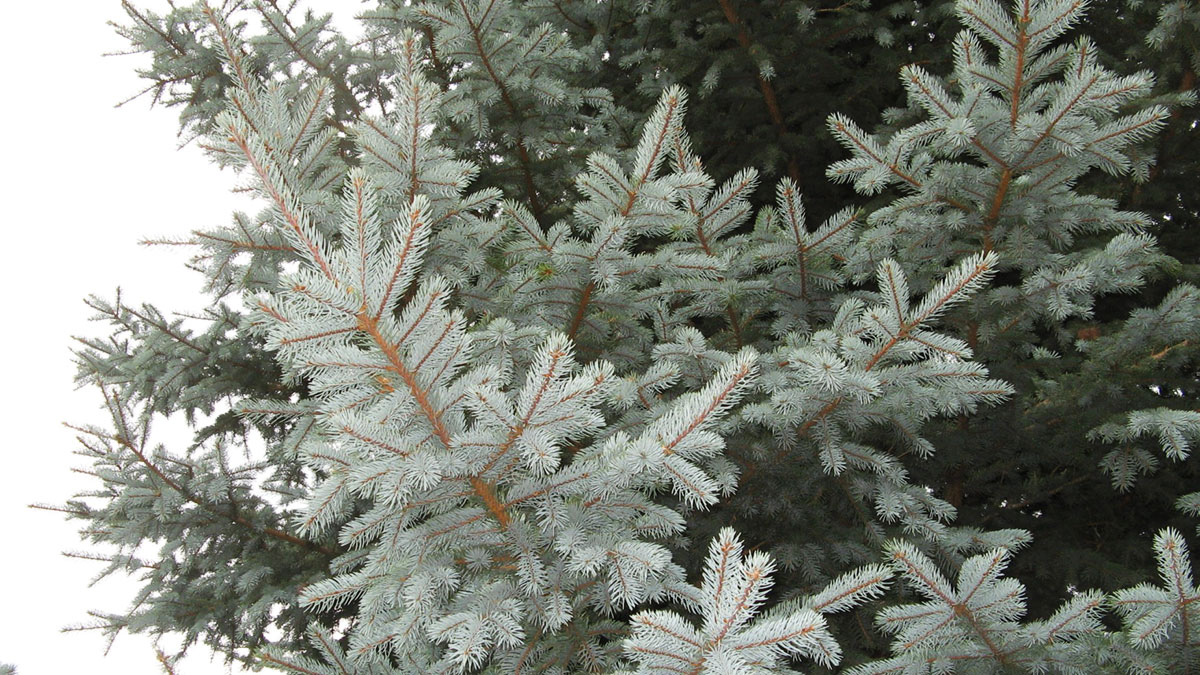How spruce trees ruined America’s suburban dream
 Supplied - Greg Goebel
Supplied - Greg GoebelAs a red-blooded suburbanite, there are few things that I cherish more than an immaculate front lawn. To me, a front lawn is more than just grass. It’s a display of care and dedication for one’s own home, and to your neighbours it shows consideration for the community as a whole. The front lawn is, to me at least, one of the cornerstones of the suburban American dream.
So it shouldn’t come as a surprise that I am by no means a friend of the Colorado Spruce tree. If you’re having trouble visualising the Colorado Spruce in your mind’s eye, then just take a look outside and you might see a spruce tree sitting on some poor sap’s front lawn. If it’s a younger tree, then it looks small and inconspicuous, if it’s an older tree then it looks like a house guest that’s overstayed its welcome.
Overgrown and sprawled over too much of your property, it has sunk roots deep into your property and will take a special effort to remove from your life.
Now it’s not that I don’t like spruce trees. I actually quite like spruce trees. In the forest. Where spruce trees belong. Not on my front lawn thankyouverymuch.
At first spruce trees look nice. When you brought that spruce tree home with you on Arbour Day, your folks might have planted it in your front yard and a couple years later it really started to grow. And it keeps growing. Long after you’ve moved out, it will still be growing spreading roots and squeezing the life out of your yard.
Due to how the Colorado Spruce spreads its roots, it will end up sucking the moisture from the soil. And for a couple of years, it will be manageable. But over time, the tree will begin to suck the life out of more and more of the soil as the root network expands. In some cases, the trees will start to exploit the cracks in your foundation, finding crevices to grow into and exploit. And they will always keep growing. Like a giant weed, the Colorado spruce won’t stop until your lawn is nothing more than a brown patch of earth, littered with spruce needles that find their way into your shoes, through your sock and into the sole of your foot when you least expect it.
The Colorado Spruce, and spruce trees in general, are nice to look at, but like other things found in the wild, maybe you shouldn’t take it home with you. And if you have to, for the love of all that is good, plant it well away from your house. It will grow in size until it threatens power lines, foundations and most important of all, lawns. On behalf of wannabe suburbanites everywhere, do us all a favour and get a cedar hedge.





yepp johnny , right said.
@johnny Boychuk
Agree with you, bro.
you’re sayin’ true.
I can’t help but notice that there is a very noticeable difference between the online version of this article and the print version. This article was heavily edited in an attempt to give it the illusion of credibility. In the print version the author uses the terms “pine” and “spruce” interchangeably. Reading the original version of this article it is clear that the author does not know anything about basic tree identification, let alone how these trees are affecting the ecology of our lawns. The most appropriate edit for this piece would have been to just delete it entirely. On behalf of everyone who knows that spruce trees don’t drop pine needles, stop publishing opinion articles from uneducated goons.